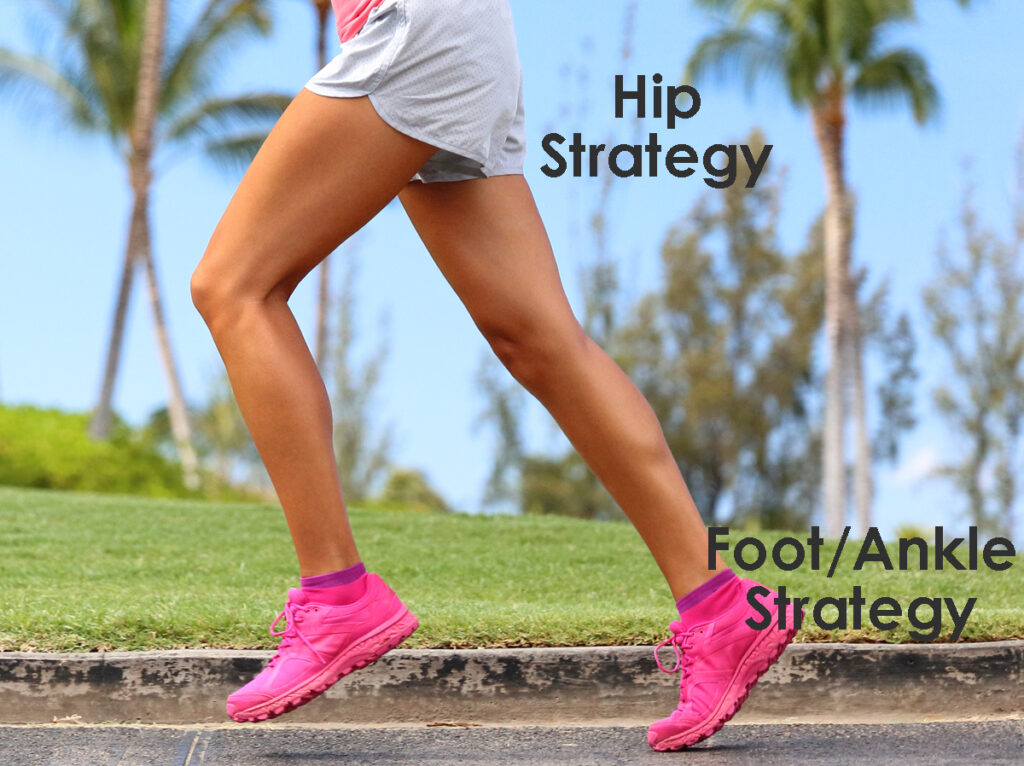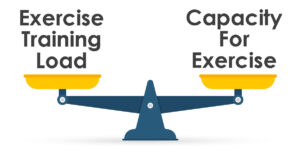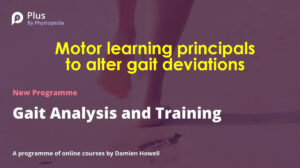Balancing joint capacity and exercise load using synergistic muscle action

A key concept in managing and preventing hip pain is understanding the balance between the capacity of the joint to handle load and using exercise training load to increase the capacity of the joint.
To modify movement, one can “load" it by adding external resistance. Or "unload" it by decreasing or eliminating external resistance. Or by modifying the movement pattern itself. "Loading" refers to increasing the demand placed on muscles, tendons, and ligaments. While "unloading" refers to reducing that demand, allowing for recovery and adaptation.

There are diagnoses where the ability of the hip joint to respond positively to progressive exercise training load improves the capacity and performance, such as gluteal tendinopathy, acetabular labral injury, and bursitis.
There are times when hip joint pathology, the initial management should be reducing exercise training load or unloading, because the hip joint to increase its capacity is relatively limited. Such as soon after a traumatic injury, early recovery from orthopedic surgery, early recovery from stress fracture, and during an acute flare of osteoarthritis or rheumatoid arthritis.
There are diagnoses where the ability of the joint to handle progressive exercise training load is permanently limited, such as chronic moderate to severe osteoarthritis and failed hip joint replacement. The focus of the intervention needs to be on unloading the joint.
Synergistic muscle action
The physiological principle of synergistic muscle action can help manage the balance between the capacity of the joint to handle load and using exercise training to increase the capacity of the joint.
Synergy means working together. Muscle groups that work together in synergy are hip joint extensor muscles and the foot/ankle plantar flexor muscles.
Muscle synergy is part of the theory of postural equilibrium or postural control. The theory is that there are two strategies the body uses to maintain balance when external forces perturb the balance: the hip strategy and the ankle strategy. The ankle strategy primarily relies on ankle (and foot) movement to counter sway. While the hip strategy involves larger, faster hip movement to restore equilibrium. These two muscle groups act in synergy.
The hip and the ankle/foot muscle groups also function in synergy, walking/running to propel forward during terminal stance, during the push-off phase.

This synergy provides an opportunity to either unload or progressively load the hip joint depending on the diagnosis.
Michael Browne et.al at North Carolina State University have shown that with instrumented biofeedback, an individual can modify the movement pattern to increase or decrease the proportion of hip strategy or foot/ankle strategy in the propulsive force walking/running.
Hypothesis:
If hip pain has a short-term limited capacity due to recent orthopedic surgery, stress fracture then initial intervention needs to focus on lessening the use of the hip strategy by using unloading interventions, such as use of cane and external supports or braces. With appropriate verbal cueing and feedback, we can redistribute the proportion of effort to propel forward by decreasing the hip strategy to increasing the ankle/foot strategy.
If the hip pain has the capacity to respond positively to progressive exercise load, such as gluteal tendinopathy, hip bursitis, and acetabular labral tear, then with appropriate cueing and feedback, we redistribute the proportion of effort propelling forward by decreasing the foot/ankle strategy to increasing the hip strategy?
If hip pain has limited capacity due to permanent impairment like moderate to severe osteoarthritis or failed hip joint replacement, then with appropriate cueing and feedback, we can redistribute the proportion of effort to propelling forward by decreasing the hip strategy to increasing the foot/ankle strategy.
The work of Michael Browne and colleagues used instrumented biofeedback in a lab setting. In the real world, instrumented biofeedback is not readily available. However, using principles of motor learning and verbal cueing, we can consciously alter the proportion and distribution of propulsive forces in the synergistic muscles of the hip and foot/ankle.
What are verbal cues and feedback to increase the proportion of the hip strategy?
- Propel from the top down.
- Feel the buttock muscle engage and contract like you felt when performing gluteal muscles isometric exercise when sitting and standing to strive for a similar feeling sensation when walking/running.
- Imagine a large dog is nipping at your butt behind you.
- Put your hand on the buttock or tap the buttock with a finger, feel the buttock muscle engage & squeeze when the foot is behind late in the stance phase walking/running.

What are verbal cues to increase the proportion of the foot/ankle strategy?
- Propel from the bottom up.
- Propel up.
- Imagine walking in wet sand, leaving an imprint under the ball of the foot.
- Kick the ground away behind.
- Walk with “spring in your step” while facing a mirror, walking on a treadmill.
- Walking on a treadmill facing a mirror increases the amount of up-down motion of the top of your head.
- Watch the beam of laser light “cat toy” attached to the hat on the head pointed at the wall ahead, walking ona treadmill, oscillate the beam up and down.

These verbal cues can be utilized during:
- The whole-part-whole method of learning and dance step to now, where in an effort to have the desired proportion of hip versus foot/ankle strategy become automatic.
- Manual reactive balance training or perturbation training for individuals who are at a fall risk.
Modifying the movement pattern can balance exercise load and joint capacity through synergistic muscle action to strategically engage hip and foot/ankle muscles that work together to enhance forward propulsion, stability/balance, and to reduce or unload individual joints when necessary.
Disclosure: When dealing with chronic hip pain and recurring hip pain, in addition to the biomedical approach presented attention to the cognitive behavioral interventions or psychologically informed practice is needed.
To explore more on this topic, particularly the “dance step to no where”, an on-demand video webinar exploring this topic is available at Plus by Physiopedia entitled “Motor learning principles to alter gait deviations”.
Use this code – “Damien30” for a 30% discount to access this webinar, as well as the more than 500 continuing education webinar courses available at Plus by Physiopedia. This is the link http://bit.ly/DAMIEN30 with the 30% discount code embedded.
mc

